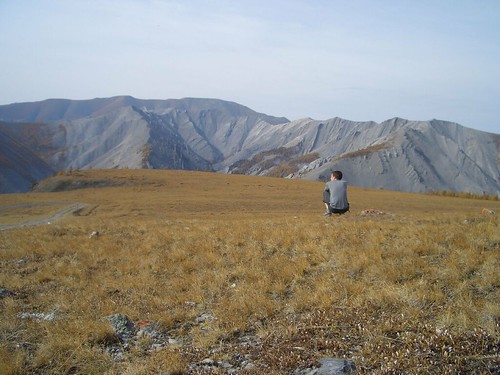We started the day with an hour ride to the Bakong complex, which is southeast of the main Angkor site. On the way, I decided that I needed to start a photo collection that showcases all of the items that people carry on their back of their motorbikes. Unfortunately, I should have started this long ago since I would have a lot more material. However, I thought even a few photos would make a good set. On our way back & forth to Bakong, we saw dead pigs, dead chickens, coconuts, 3 family members (for a total of 4/motorbike), logs, and misc. crops.
 We pulled up to what we thought was Bakong - at first glance it didn't look like much of a site. There were 5 towers that were in various amounts of disarray. As usual, there was a crew of people working on restoration. While I was walking around, I was starting to regret not hiring a guide to talk about everything that we were seeing. It was too late for that today, as we had already left the city. We jumped back into the chariot when we were finished looking around; both James & I weren't very impressed by this site. We had several recommendations that it was a great place to visit, and we started to wonder the criteria using to define a 'great' temple.
We pulled up to what we thought was Bakong - at first glance it didn't look like much of a site. There were 5 towers that were in various amounts of disarray. As usual, there was a crew of people working on restoration. While I was walking around, I was starting to regret not hiring a guide to talk about everything that we were seeing. It was too late for that today, as we had already left the city. We jumped back into the chariot when we were finished looking around; both James & I weren't very impressed by this site. We had several recommendations that it was a great place to visit, and we started to wonder the criteria using to define a 'great' temple.When we were leaving the site, we didn't go back to town. A few minutes later, Buntay announces that we are arriving at Bakong. James & I looked at each other and laughed - our disappointment was wrong since the first temple wasn't Bakong. As we approached Bakong on foot, this was a much more impressive temple. A moat surrounds the compound, and there are several large outer buildings that surround the main site. The main structure has stone elephants on each of its tiers; looking out at the corners of the square temple. Due to environmental wear on the stone, all of the elephants had lost their trunks and also their tails. This appeared to be a working temple, as monks had living quarters adjacent to the temple's outer walls.
After Bakong, it took us about an hour to return to the main Angkor Wat area. We visited
Sras Srang is a gigantic square lake. When I first approached it, I was disappointed. There were no gigantic stone towers or meters of intricate sandstone carvings. At the entrance, there were a few hydras that had been well-weathered. As I stood there trying to search for a better grasp on the site, I imagined one million people using this as a bath. Suddenly the site didn't seem nearly large enough to accommodate that many people. Another thing I noticed was that there were 4 sections of stone steps that led down into the water. My description will not do it justice, but just transporting/laying the stones would have taken a crew of 10 people probably over 1 year to complete.
We headed over to Pre Rup to catch the sunset. We arrived at 4pm and were done exploring the site within an hour. James didn't feel like sitting around for another hour to watch the sunset, but I can recommend the site as a nice place to watch the sun plummet back to Earth.

No comments:
Post a Comment